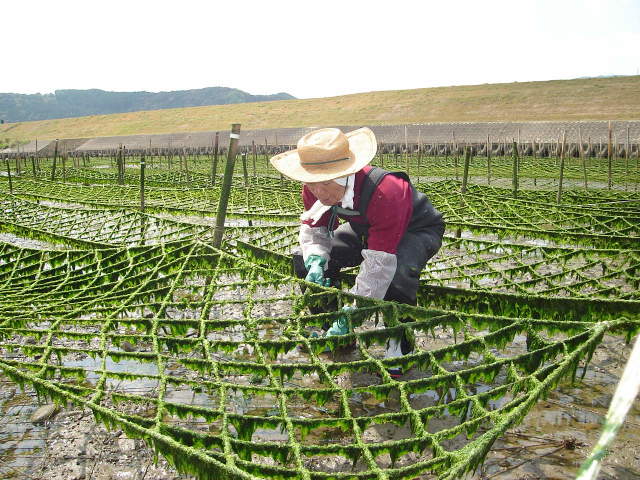Several environmental problems can result from seaweed farming. Sometimes seaweed farmers cut down mangroves to use as stakes for their ropes. This, however, negatively affects farming since it reduces the water quality and mangrove biodiversity due to depletion. Farmers may also sometimes remove eelgrass from their farming areas. This, however, is also discouraged, as it adversely affects water quality.
Seaweed farming helps to preserve coral reefs by increasing diversity where the algae and seaweed have been introduced, and it also provides an added niche for local species of fish and invertebrates. Farming may be beneficial by increasing the production of herbivorous fishes and shellfish in the area. Pollnac & et al 1997b reported an increase in Siginid population after the start of extensive farming of eucheuma seaweed in villages in North Sulawesi, Indonesia.
Seaweed culture can also be used to capture, absorb, and eventually incorporate excessive nutrients into living tissue. "Nutrient bioextraction" is the preferred term for bioremediation involving cultured plants and animals. Nutrient bioextraction is the practice of farming and harvesting shellfish and seaweed to remove nitrogen and other nutrients from natural water bodies.
There has been considerable attention to how large-scale seaweed cultivation in the open ocean can act as a form of carbon sequestration to mitigate climate change. A number of academic studies have demonstrated that nearshore seaweed forests constitute a source of blue carbon, as seaweed detritus is carried by wave currents into the middle and deep ocean thereby sequestering carbon. Moreover, nothing on earth sequesters carbon faster than macrocystis pyriferna which can grow up to 60m in length and as rapidly as 50 cm a day in ideal conditions. It has therefore been suggested that growing seaweeds at scale can have a significant impact on climate change. According to one study, covering 9% of the world’s oceans with kelp forests could “could produce sufficient biomethane to replace all of today’s needs in fossil fuel energy, while removing 53 billion tons of CO2 per year from the atmosphere, restoring pre-industrial levels.

